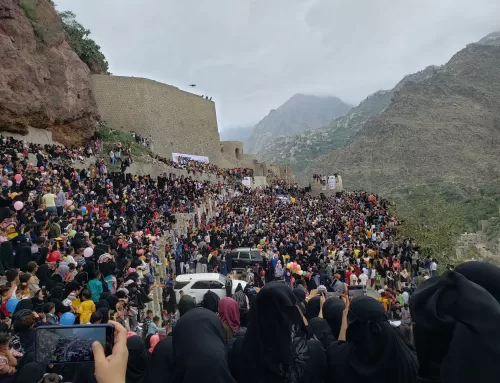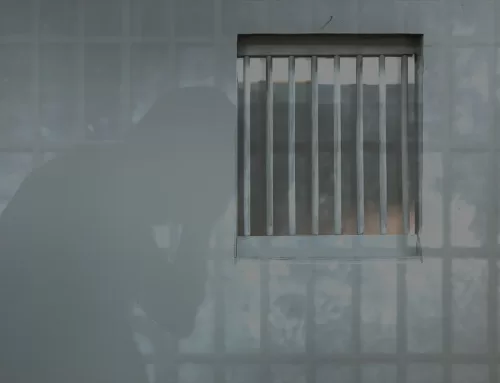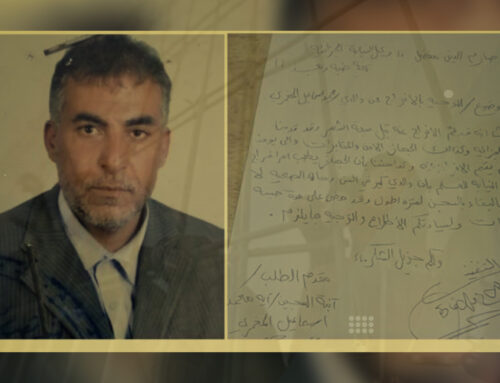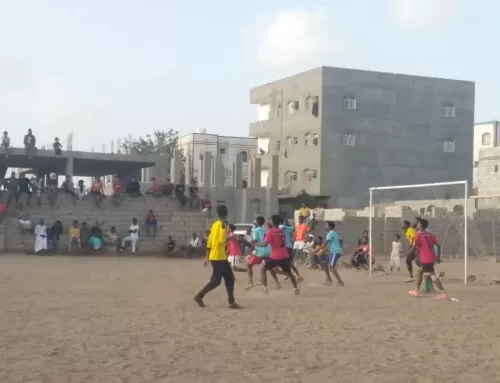Air strikes target civilian vehicles on a public road
January 11,2022
Civilians in Al-Jawf province, northeast of Yemen, have been attacked by Saudi– UAE led coalition airstrikes, that have intensified since March 2020 after Ansar Allah group, the Houthis, took control of vast territories in the province bordering Saudi territory.
Thursday, August 6, 2020, at approximately 9:30 am, the Saudi – UAE led coalition carried out an airstrike with six bombs on civilian cars on the road linking Khub and Al Sha`af districts with the districts of Barat Al Anan and Rajoza in Al Jawf province. The first three bombs fell at intervals of between five and ten minutes on two civilian cars that were carrying civilians on an Eid visit, while three other bombs fell at about 10:30 a.m on another civilian car that was passing approximately 300 meters away from the location where the previous two cars were targeted. The attack killed eight children and wounded 15 civilians, including eight children and four women.
After news of the attack arrived, a researcher of Mwatana set out from the city of Al Hazm, the provincial center of Al-Jawf, to the Khub and Sha’af district, on August 11, 2020, via the Aqaba road, which was a coveted dream to travel through for the past six years. It opened in March 2020.
It took the researcher three to four hours to travel. He said: “As we were traveling, our eyes did not stop watching the devastated areas left by the war on the sides of the road, while aircraft were flying over our heads.”
Although these areas were free from confrontations, there is still a real threat to civilians lurking there. The warning plates of mine hazard can be seen along the road in the Aqaba area, requiring drivers not to cross the line, carefully drawn along with barbed wire. We continued driving through the villages to the Khub Valley, where some of the families of raid-victims live.
Khub and Sha’af is the largest district in Al-Jawf Governorate- and Yemen as a whole- in terms of area. It is populated by thousands of inhabitants. The district includes several isolated areas, the largest of which are (Khib), (Al-Yatama), (Al-Sha’af) and (Al-Rayyan). The district is located to the northeast of Al-Hazm city, the provincial enter. It is now under the control of Ansar Allah armed group (Houthis), except for the areas of Al-Rayyan and Al-Yatama, which are controlled by the forces of the internationally recognized government.
The researcher conducted interviews with the survivors and the families of the victims, during which they stated that the victims were from the families of the Ma’atera tribe, and they were also the owners of the three cars that have been bombed during their journey to the relatives on the Eid holiday. Survivors say the paramedics were about three hours late in reaching them because the communications network was cut off.
The researcher then went with some of the of the victims’ families to Haraadh and Haraab, the two areas targeted by the aerial bombardment, about 50 km away from Wadi Khab, on a very rugged mountainous road, that took about two hours to travel through to reach the area.
According to the researcher’s observations, there are no military targets close to the place, and the area is a remote place, far from populated centers.
“The world became blurred in our eyes, and we could not see a thing,” she lamented. “Shrapnel were like rain. Shage’a was hit by a splinter, and Eida and I were hit on the head. We choked on dust and smoke. As for our children in the trunk box, they were all killed; My three children, Reem (11), Naglaa (9) and Abdullah (6 years)! As for Shage’a’s children, two of them were killed, along with two of my sister Sayida’s children.. The rest were wounded by shrapnel.”
The first air attack took place around 09:30 a.m., and targeted the truck of Shage’a Al-Naja’ei (40 years), which was carrying 21 children and women, including 8 children killed and 11 others injured.
About five minutes later, the aircraft launched a second attack on the car of A’rfag Al-Ma’atari (44 years old), followed by a third attack on the same vehicle about 10 minutes later. Some of the seven civilians who were on board the car fled, three of whom were children and two women. This attack resulted in the death of a girl and the wounding of five others, one of them seriously. They were from the Ma’atera tribe on their way to the districts of Rajuza and Anan, to pay a holiday visit to their families there.
“I wish I were killed in that attack,” she wailed.“I wish I did not see that bereavement… of my children dying in front of my eyes while I could do nothing.”
Despite civilians casualties, the aircraft continued to circle around until 10:30 am, during which three more strikes were inflicted on Ali Mas’oud Al-Ma’atari’s truck, on the same road, while he was heading to the Khab area. He was carrying on a number of empty oil barrels the trunk. During the strike the driver escaped miraculously. Even with the destruction of the car, the aircraft continued to soar for about an hour. The wounded were taken to Al-Jawf Hospital, and then to the European Hospital in Sana’a.
Shafa’a Al-Ma’tari (40 years), one of the survivors, and the mother of three children killed in the first attack, talked about her ordeal.
“We left our homes, in Wadi Khab area, after dawn, accompanied by Shage’a and his family,” she started. “I and Eida (38 years), Shage’a’s wife, were in the cabin behind the driver, while our children and two women, my sister Sayida and her children and Saada and her children, were in the trunk. In Maqa’r area the car broke down, and we waited for it to be fixed.”
“The car started a little, but broke down again in one of the wadis, where the road is bumpy and tiring,” she continued. “When we reached an area called Haraab, (Haraadh), as soon as we heard the sound of aircraft, they casted down their affliction on us.”
“The world became blurred in our eyes, and we could not see a thing,” she lamented. “Shrapnel were like rain. Shage’a was hit by a splinter, and Eida and I were hit on the head. We choked on dust and smoke. As for our children in the trunk box, they were all killed; My three children, Reem (11), Naglaa (9) and Abdullah (6 years)! As for Shage’a’s children, two of them were killed, along with two of my sister Sayida’s children.. The rest were wounded by shrapnel.”
“I wish I were killed in that attack,” she wailed.“I wish I did not see that bereavement… of my children dying in front of my eyes while I could do nothing.”
“The aircraft kept hovering over us, so we got out of the cars and ran away,” she resumed, “then they hit another car behind us. We hurried back to pull our children out, Eida, Sa’ada and I hurried to some crags. I was screaming at the top of my voice, and there was no one to save us. When the hovering stopped, I took myself and walked two hours between the mountains. I was falling and standing up on my feet, to keep going. My voice became hoarse, my tongue stopped moving and I lost my voice.”
“I reached a group of bedouins,” she continued narrating.“ I asked them to come to our rescue. It was almost 1 p.m., and I was back with one of the area’s cars, to take the wounded. Those who were killed were seven, including my children. I stayed until the afternoon, when another car arrived to pick us up, and they buried them in the Haraadh area.”
“I still don’t know what we did to get killed. After I returned home, I collapsed of a nervous breakdown and fatigue. I was very tired, so they took me to the hospital. I can’t describe the condition I’m in. Is there anyone who can deny this crime? Allah is sufficient for me and He is the best disposer of affairs!” Shafa’a concluded her account.
For his part, A’rfag Muhammad (44 years), was the driver of the second car that was hit.
“We left Wadi Khub heading to the district of Rajoza,”, going to greet our family and relatives there,” he started his account. “I was driving my car, with seven people on board, including three children and two women. When we reached the middle of the Haraadh area, we heard the first strike that hit upper Haraadh. We could hear the planes flying overhead, so we felt the danger. I stopped the car and pulled over at the side of the road, and the rocket hit us. It fell on the road near the car, but God saved us. It was 9:45 am.”
“We moved away from the car a few meters, then the aircraft came back and targeted the car with a second strike. It hit the front of the car and smashed it completely. Rocket shrapnel scattered everywhere, and one of those shrapnel hit my niece, Fiza (12 years), the shrapnel cut her body in two. Another shrapnel hit the other girl Nuwayra Saleh Saeed (8 years), in the leg, although she was about seventy meters away from the car.”
“I was hit by a fragment in my left foot, but it was a minor injury. The time between the two attacks was about three to four minutes. I had this car for only one week since I bought it. I am stilled indebted for half the money. I walked unconsciously and was lost between the mountains, while the others searched for me for about an hour until they found me.”
“There was no justification for bombing us, we were taking the road like any ordinary citizens, and there were no military, or military appearance, or military vehicle sites in the area. By whom there is no god but He, we did not see any Houthi military vehicle on our way, from the time we left Wadi Khub until we were bombed by the warplanes in the Haraadh area. We considered this road to be safe, and no such incidents occurred in it,” he concluded.
Farag Al-Ma’atari (42 years old), was one of the paramedics. “I work in the Al-Uqla area, about 700 meters from the targeted place.” he said. “The planes were flying over us, at about 09:30, the first strike was on Shage’a’s car when he reached a high place in Harraab area (Haraad). I could see smoke and dust floating in the air, while the aircraft continued to hover. As for Ali Mas’oud, God saved him, and he was able to leave the car after the first strike. The car was not hit directly except in the second strike. Nothing was left of the car.
Ali Masoud was heading to the Khub al-Jawf area, carrying diesel barrels on his truck. About five minutes later the aircraft returned, to hit twice the same road, targeting this time A’rfag Furan’s car. I got up to help them, evacuated the women and children to my tent. then we went back to look for A’rfag between the ravines and the mountains. After some time we found him in a condition that only God knows about. His face was burnt black. We asked him, ‘where have you been?’ He answered,‘ I was looking for my women.’” Farag Al-Ma’atari concluded.
These crimes committed by the Saudi – UAE led coalition aircraft against civilians in Al-Jawf province have been preceded by others against civilians in Al-Hazm and Al-Masloub districts in February and July, 2020, which Mwatana documented; the first crime took place in mid-February of the same year, killing 53 civilians in the village of Al Saida, Al Maslub district, in the north-east of the country, perpetrated by coalition aircraft.
The second crime was in mid-July of the same year, on the morning of Wednesday 15 July, 2020, at approximately 7:00 a.m.. The Saudi- UAE led coalition dropped two bombs on civilians who had gathered to celebrate a family occasion in the village of Al-Musa’afa, Al-Hazm district in Al-Jawf province. This attack resulted in the killing of 12 civilians, including 7 children and two women, and the injury of six others, including five children and a woman. Mwatana did not find any military targets near the site of the attack.
Civilians in Al-Jawf are now expecting to die in an airstrike at any moment. They do not stop to ask what did they do to get killed? and if anyone knows of their suffering?






